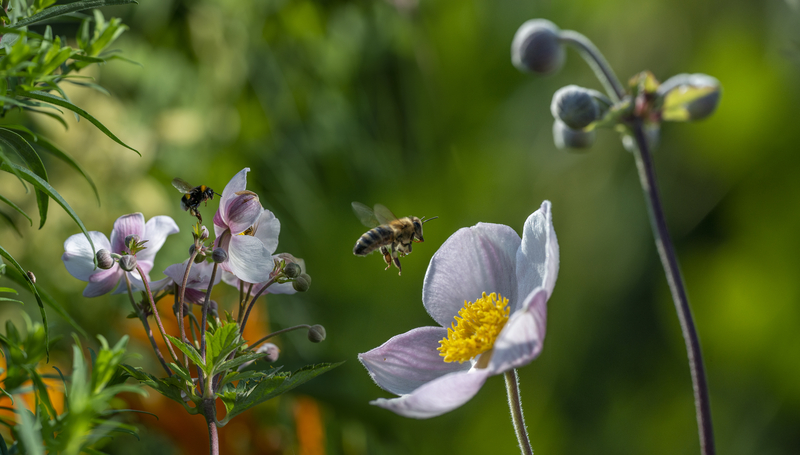The sun is shining, the grass is getting greener, and all of those lovely pollinators are starting to reappear in your garden.
And if you love bees as much as we do, you’re probably wondering what you can do to support the tiny creatures during the early spring season. After all, scant food and chilly nights don’t exactly make for the easiest living conditions.
To help, we spoke to gardening experts to find the best ways to support the bees in your yard during spring. Here are seven things you can do right now to ensure a healthy environment so your local pollinators can thrive all summer long.
1. Put down the rake (for now)
One of the best ways to make your yard a bee haven this spring? Hold off on raking, mowing, or tilling.
“Wait to rake until late spring or early summer to help protect queen bees and other pollinators that may be hibernating in the soil,” says Zeeshan Haider, CEO and founder of Greenry Enthusiast. When temperatures are consistently above 50 degrees, all the sleepy bees will have fully emerged and you can get to cleaning up your yard then.
2. Go organic
Another way to support your local pollinators right now is to resist adding harmful chemicals to your yard.
“Eliminating pesticides creates an environment that keeps bees safe, which will help your garden spring to life big-time,” says Elle Meager, founder of Outdoor Happens. “Splashing your tomato plants or herb garden with pesticides to eradicate a few aphids is likely doing more harm than good. So try natural pest control methods instead.”
Natural methods include blasting plants with water, using organic alternatives like neem oil, or even introducing larger predators that will take care of the pest control for you.
One such spotted predator that won’t harm the bees? Ladybugs.
“Ladybugs are far superior to pesticides,” adds Meager.
3. Keep the weeds
Once your bees are safe, it’s a good idea to ensure your garden and yard have some natural food sources. And in spring, food often comes from the weeds we all love to dig out.
“No one likes weeds—except bees,” says Andrea Ballanti of Your Indoor Herbs. “Dandelions and clover are great sources of food for bees. So if you can, leave these plants around for a bit so your local bees can feed on them.”
Your garden will thank you. Besides being good early-season food for bees, clover and dandelion are also natural soil builders.
4. Embrace native plants
If you love bees, then you probably know all about planting a wide variety of pollinator-friendly plants. But one of the best things you can add to your garden for the bees are plants that naturally grow in your climate.
“Native plants are adapted to your local soil, making them more resilient and better able to provide the resources that pollinators need,” says Zahid Adnan of The Plant Bible.
Because they’ve co-evolved with native pollinators, native plants are also more likely to provide the right kind of nectar and pollen for local bees.
5. Refill your water features
If you have a fountain or some other water feature in your yard, now’s a good time to fill them up for your local pollinators.
“Bees work hard in your garden,” says Meager. “They then work up a thirst. So adding plenty of fresh water will incentivize them to stick around nearby and make themselves at home.”
Meager recommends adding birdbaths of various sizes and depths to help local songbirds and other pollinators quench their thirst as well.
After food and water, consider providing your pollinators with a bit of extra shelter. One way to do this is to build a bee hotel.
“Bee hotels provide nesting habitat for solitary bees, which make up the majority of bee species,” says Adnan. “Logs with holes drilled into them make great bee hotels, but it’s important to make sure the holes are the right size.”
Different bee species have different preferences for hole diameter, so be sure and do some research on which kind of bees you’d like to attract (and their preferred diameter of nesting hole) before you start drilling.
7. Be patient and observe
If you’re hoping to build a garden that local pollinators will return to year after year, one of the best things you can do is also one of the simplest: Pay attention.
“Observe the bees and other pollinators that visit your garden, and try to identify the different species you see,” says Adnan. “This can help you tailor your gardening practices to the needs of local pollinators.”
And don’t be afraid to experiment and try out new varieties of flowers that might offer new food sources or nesting habitats. Take note of what your local bees seem to love, and then work on adding more.
Larissa Runkle, realtor.com
